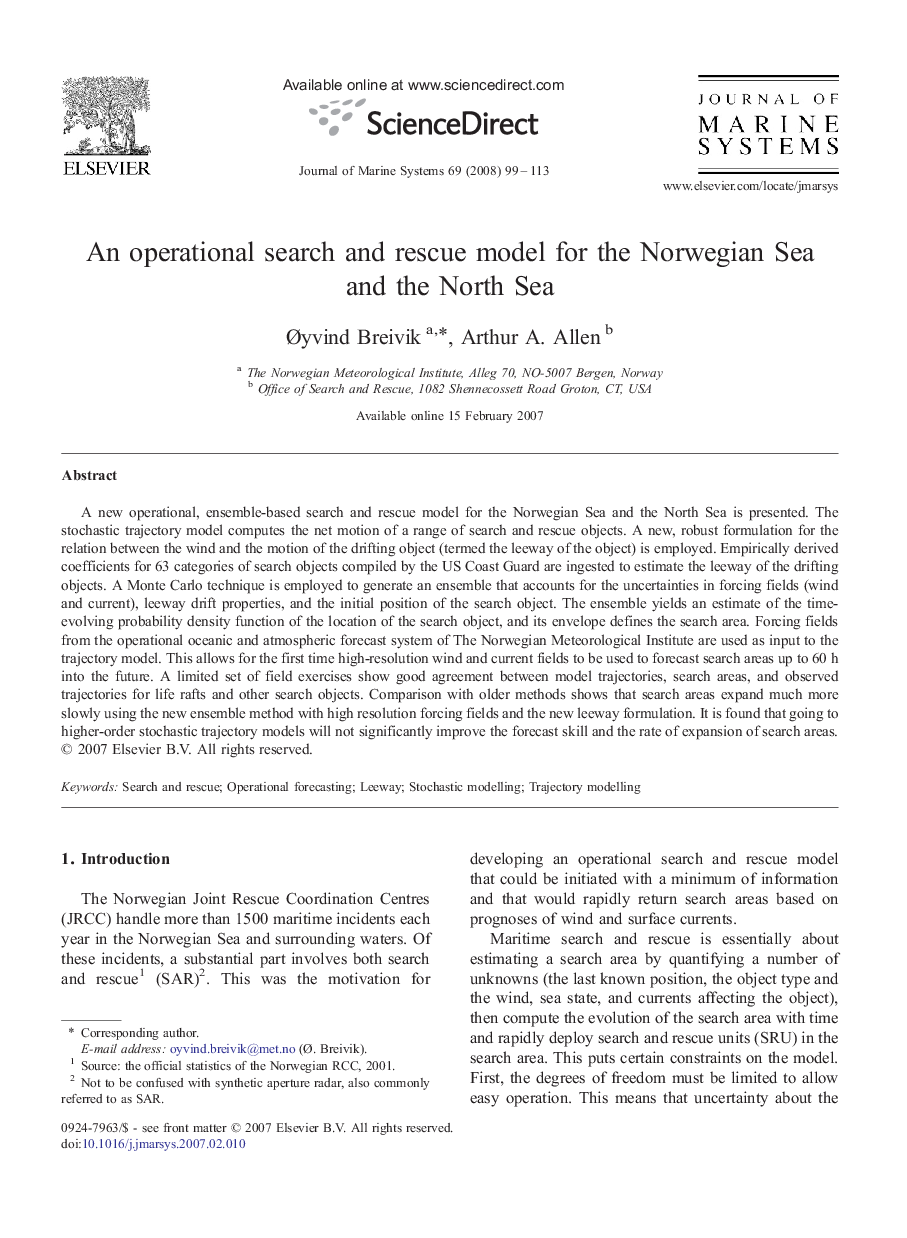| Article ID | Journal | Published Year | Pages | File Type |
|---|---|---|---|---|
| 4549190 | Journal of Marine Systems | 2008 | 15 Pages |
A new operational, ensemble-based search and rescue model for the Norwegian Sea and the North Sea is presented. The stochastic trajectory model computes the net motion of a range of search and rescue objects. A new, robust formulation for the relation between the wind and the motion of the drifting object (termed the leeway of the object) is employed. Empirically derived coefficients for 63 categories of search objects compiled by the US Coast Guard are ingested to estimate the leeway of the drifting objects. A Monte Carlo technique is employed to generate an ensemble that accounts for the uncertainties in forcing fields (wind and current), leeway drift properties, and the initial position of the search object. The ensemble yields an estimate of the time-evolving probability density function of the location of the search object, and its envelope defines the search area. Forcing fields from the operational oceanic and atmospheric forecast system of The Norwegian Meteorological Institute are used as input to the trajectory model. This allows for the first time high-resolution wind and current fields to be used to forecast search areas up to 60 h into the future. A limited set of field exercises show good agreement between model trajectories, search areas, and observed trajectories for life rafts and other search objects. Comparison with older methods shows that search areas expand much more slowly using the new ensemble method with high resolution forcing fields and the new leeway formulation. It is found that going to higher-order stochastic trajectory models will not significantly improve the forecast skill and the rate of expansion of search areas.
